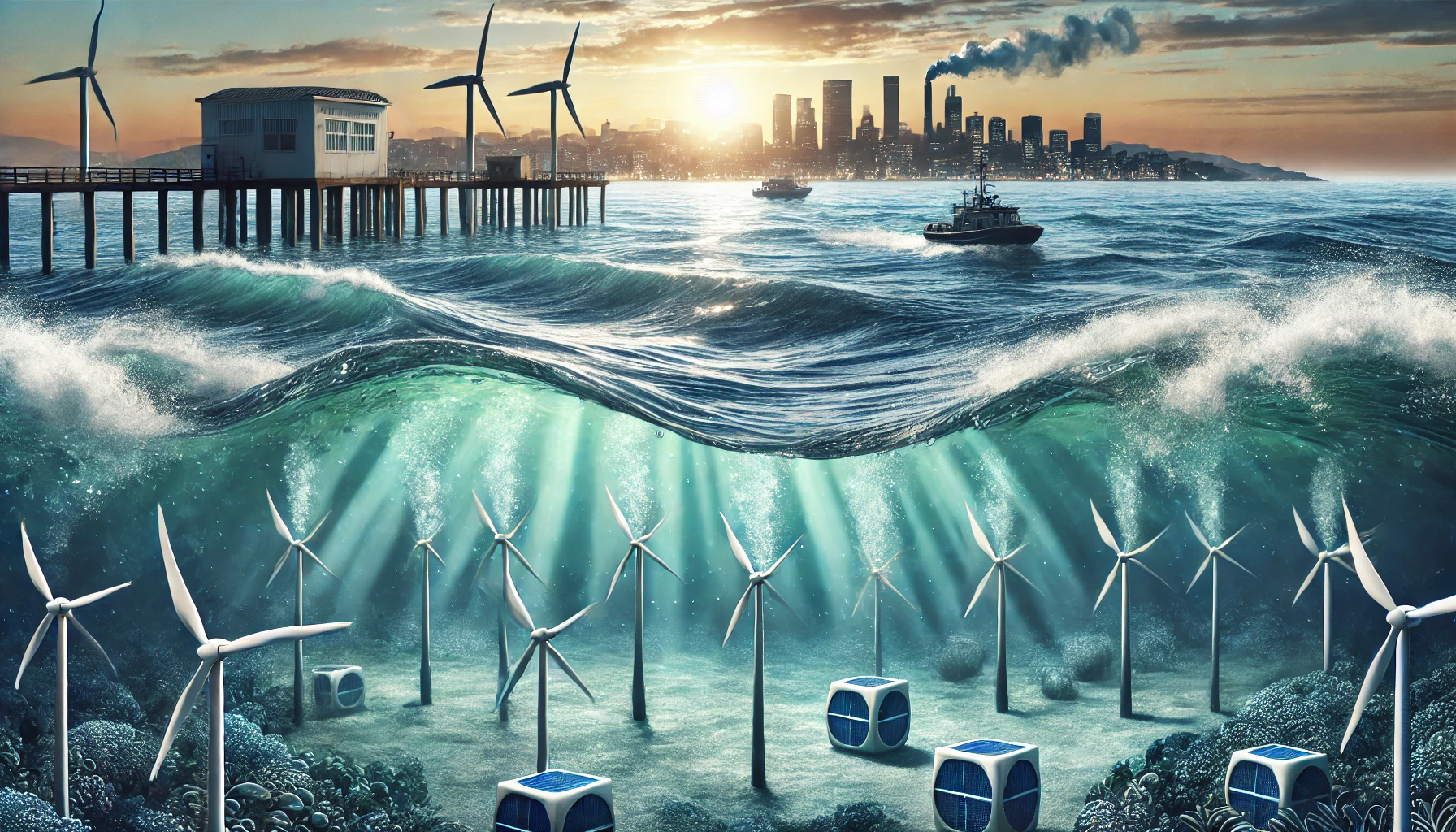Harnessing the Power of Ocean Currents: The Next Frontier in Renewable Energy

The Untapped Potential of Ocean Currents
When we talk about renewable energy, solar and wind power usually steal the spotlight. But there’s a new player making waves, quite literally—ocean currents. Picture this: instead of relying on the sun or wind, startups and energy companies are now harnessing the constant, reliable movement of ocean currents. The ocean is always moving, right? So why not tap into that endless energy? That’s what innovators in tidal and wave energy are banking on, and it's changing the game in renewable energy.
Tidal and Wave Energy Technologies: How They Work
Okay, so how exactly do you get energy from waves and tides? Think of it like wind turbines but underwater. Tidal energy relies on the natural rise and fall of ocean tides, and special turbines are placed in key locations where the water moves the fastest. These turbines convert the kinetic energy from moving water into electricity, much like wind turbines convert wind. Wave energy, on the other hand, uses the surface motion of waves to generate power. Startups are developing innovative devices that bob along with the waves, using their up-and-down motion to generate clean energy. It’s like surfing, but for electricity!
Meet the Innovators Leading the Charge
Some of the most exciting companies in renewable energy are focusing on ocean currents. Take Orbital Marine Power, for example. This Scottish company is one of the pioneers in tidal energy, having developed floating turbines that capture energy from fast-moving tidal waters. Another big player is AW-Energy, a Finnish startup that's working on WaveRoller, a technology designed to harness the energy of ocean waves near the shore. These startups aren’t just thinking big—they’re making waves, literally and figuratively. Their tech could provide reliable, renewable energy for coastal regions across the globe.
Environmental Impact: Friend or Foe?
Now, let’s talk about the elephant—or should we say whale—in the room. How do these tidal and wave energy technologies impact the environment? The good news is that ocean energy is one of the most eco-friendly renewable sources out there. The turbines and wave devices are designed to minimize disruption to marine life, and since they’re underwater, they don’t take up precious land space. But it’s not all smooth sailing. Critics argue that large-scale installations could affect fish migration and ocean habitats. It’s a balancing act between harnessing energy and protecting ecosystems, and many companies are working hard to get it right.
Scalability: Can We Power Coastal Cities with Ocean Currents?
While ocean energy has massive potential, the big question is: Can it scale? Coastal regions worldwide could benefit from this renewable energy source, but there are challenges. One major hurdle is the cost. Building and maintaining turbines underwater isn’t cheap, and the technology is still in its early stages compared to solar and wind. However, as more investment pours into this sector, prices are expected to drop, just like we saw with solar panels. The hope is that as the tech evolves, tidal and wave energy will become a staple in our renewable energy mix. Who knows? Maybe one day, your beach vacation will be powered by the very waves you're surfing.
The Future of Ocean Energy
The future of ocean energy is bright, and it’s not just about tides and waves. Scientists are also exploring the potential of harnessing thermal energy from ocean water. The deep ocean holds vast amounts of heat, and that heat can be converted into electricity using special technology. Imagine combining tidal, wave, and thermal energy to create a trifecta of renewable power! The ocean is a treasure trove of untapped energy, and as technology continues to advance, we’re likely to see some exciting developments in this space. The next big leap in renewable energy might just be hiding beneath the waves.
So, What’s Next?
Ocean currents could very well be the next big thing in renewable energy. From startups developing cutting-edge technology to environmental efforts ensuring sustainability, the potential is enormous. However, scaling and reducing costs remain critical challenges. Could ocean energy soon power entire coastal cities? What do you think?



